The Hagia Sophia, whose name means “Holy Wisdom,” is also called the Church of the Holy Wisdom or the Church of the Divine Wisdom. The structure was built originally as a Christian church, converted into a mosque, and today, a museum. The museum was originally built as a cathedral in Constantinople (present-day Istanbul, Turkey) in the sixth century A.D. Its structure is based on a central plan, consisting of two floors centered on a giant nave with a great dome ceiling, along with smaller domes. When The Byzantine era ended in 1453 and Constantinople fell, the body of the original church was surrounded by later additions, including minarets built by the Ottoman Turks. Today, the Hagia Sophia is one of the most visited museums in the world.
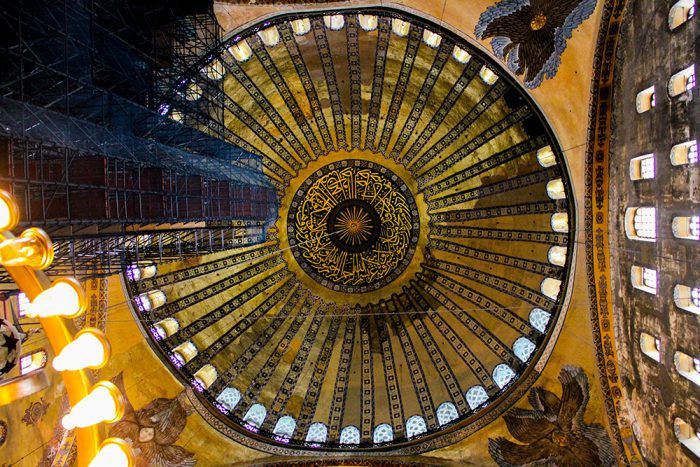
An interior view of the central dome of the Hagia Sophia In Istanbul, Turkey.

The south wall and gallery displaying both Christian and Muslim elements of design.
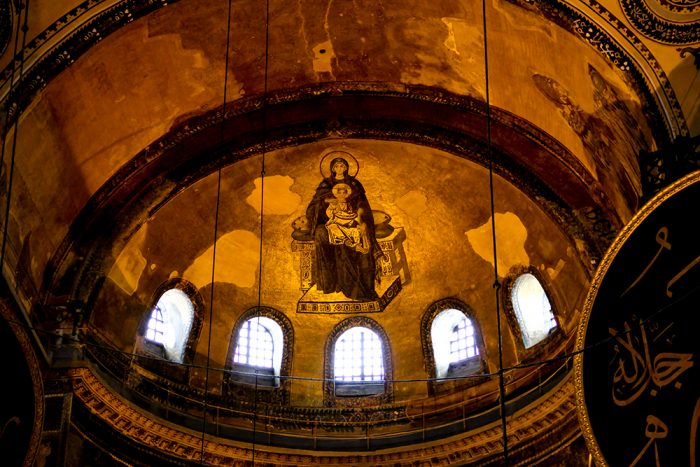
The apse mosaic of the Virgin Mary and Jesus, dating back to the 9th century.

A view of the highly decorative interior from the nave.
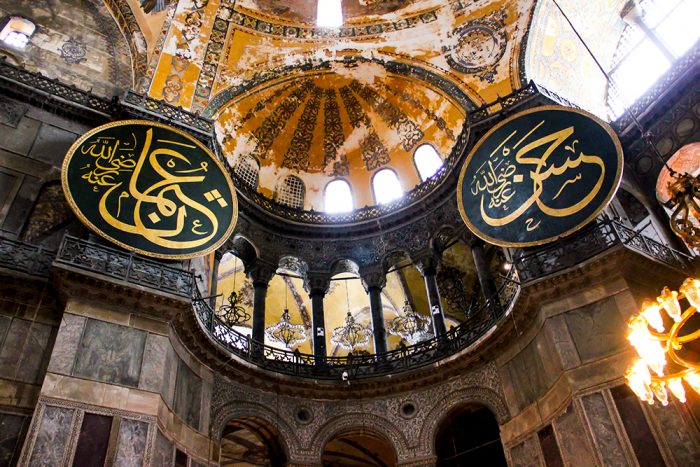
A view of the half domes located on the interior of the south wall, displaying Corinthian style columns and the calligraphic roundels.

A close-up of one of the eight calligraphic roundels completed by Kazasker Mustafa Izzet Efendi.
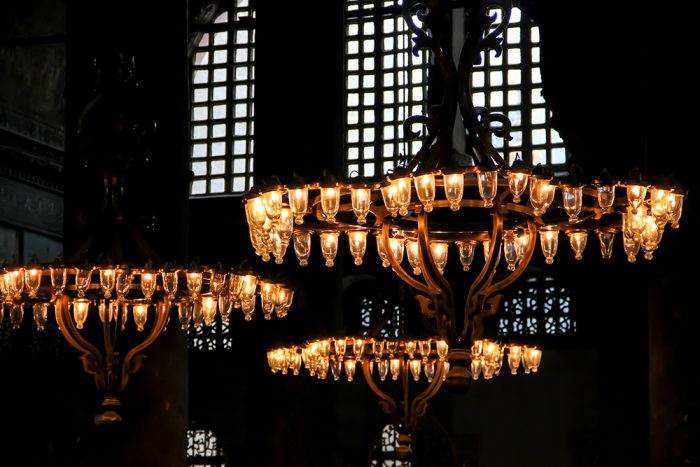
Antique brass Byzantine-style chandeliers inside the nave.
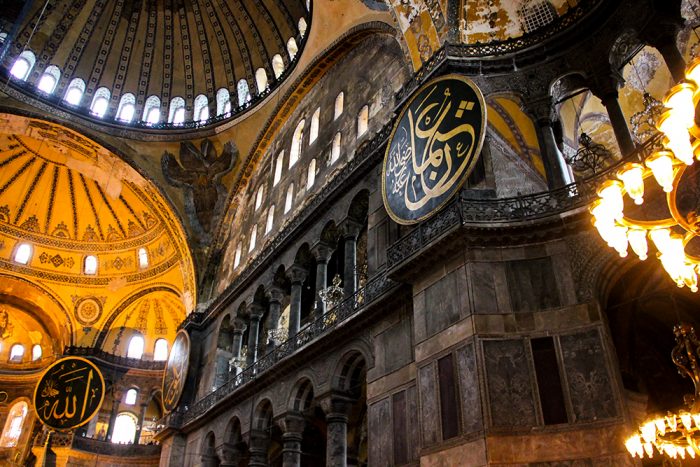
An interior view of the central dome, apse, and south wall.
Leave a Reply